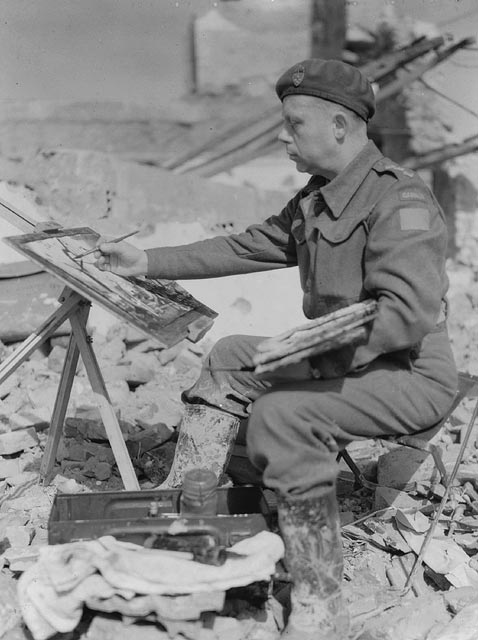Charles Fraser Comfort
 |
Biography: Charles Comfort was born in Edinburgh, Scotland.
At the age of 12, he immigrated to Canada.
The family settled in Winnipeg and young
Charles became an apprentice artist at Brigden's
Ltd. To perfect his technique, he enrolled
in 1916 in the Winnipeg School of Art, and
lived in New York from 1922 to 1923, where
he frequented the Art Students League. He
moved to Toronto in 1925, opened his own
studio in 1931, and obtained his first major
commissions during the 1930s. It was the
beginning of a long, successful career marked
by many exhibitions and prestigious appointments.
In 1935, he taught at the Ontario
College
of Art and served as director
of the Department
of Mural Painting until 1938,
when he accepted
a position as a lecturer in the
Department
of Fine Art at the University
of Toronto.
He continued to teach at the
Ontario College
of Art and was invited to give
courses at
the Banff School of Fine Art.
In 1940, he
became an associate professor
in the Department
of Art and Archaeology of the
University
of Toronto, where he would teach
for 20 years.
In 1943, Comfort joined the war
effort and
enlisted as a war artist. Initially
posted
to southern England, he accompanied
the First
Canadian Infantry Division during
the Italian
campaign. He painted scenes from
the bloody
battles of Ortona and the Liri
Valley. He
returned to the United Kingdom
in August
1944 and then spent several weeks
in North-West
Europe in 1945. He was demobilized
in 1946.
He described his war experience
in his work
Artist at War, published in 1956.
Comfort was involved in several
organizations
devoted to promoting art, such
as the Ontario
Society of Artists, the Canadian
Society
of Graphic Art, the Canadian
Group of Painters,
the Federation of Canadian Artists
and Royal
Canadian Academy of Arts. He
served as president
of the latter from 1957 to 1960.
He was appointed
Director of the National Gallery
of Canada
in 1960 and left that position
in 1965 to
devote himself full-time to painting.
Comfort is known primarily for
his murals
(in particular the one in the
Canadian Pavilion
at the Paris Exhibition of 1937,
another
in the National Library and National
Archives
building in Ottawa, and one in
the Central
Station in Montreal) and his
portraits (Governors
General Athlone, Vanier and Michener).
His
war paintings and landscapes
in oil and watercolour
are also well appreciated.
Charles Comfort died in Ottawa
on July 5th,
1994. In recognition of his work,
Mount Allison
University and the Royal Military
College
of Canada awarded him honorary
diplomas.
He was named a Fellow of the
Royal Society
of Arts in London and an Officer
of the Order
of Canada in 1972.
Proceed to Charles 2

